Designer: Pete Dye/Jack Nicklaus (1969)
Location: Hilton Head Island, South Carolina
History: Harbour Town is the direct result of local real estate developer Charles Fraser’s vision to build a world-class resort and PGA caliber course on Hilton Head Island. Fraser enlisted Jack Nicklaus to consult on the course and Nicklaus recommended Pete Dye for the design. While Dye had built The Golf Club and Crooked Stick by this point, he was hardly a household name and what he and Jack built in 1969 was simply revolutionary. The course immediately hosted the RBC Heritage the year it was built and has hosted the event annually since. The RBC is a premium PGA Tour event with winners such as Arnold Palmer, Jack Nicklaus, Greg Norman, and Tom Watson earning its famous red plaid winner’s jacket. Additional courses at Sea Pines Resort include Heron Point and Atlantic Dunes, but Harbour Town is considered the best, earning the following awards:
- #160 Best Course in America – Golf Digest (2023)
- #63 Best Course in America – Golf Magazine (2022)
- #59 Best Modern Course in America – Golfweek (2023)
- #27 Best Public Course in America – Golf Digest (2023)
- #16 Best Public Course in America – Golf Magazine (2021)
- #26 Best Public Course in America – Golfweek (2023)
- #21 Best Resort Course in America – Golfweek (2024)
- #6 Best Course in South Carolina – Golf Digest (2023)
- #3 Best Course in South Carolina – Golf Magazine (2023)
- #4 Best Course in South Carolina – Top100golfcourses.com (2020)
- #2 Best Public Course in South Carolina – Golfweek (2023)
Conditions: 9/10, Harbour Town is in very strong shape with lush teeboxes and fairways, quick greens, and beautifully manicured bunkering.
Value: 2/10, A victim (or beneficiary) of the Covid golf boom, Harbour was reasonably priced when I played, but now is fairly overpriced at over $500 a round.
Scorecard:
Tee Par Yardage Rating Slope
Heritage 71 7099 75.9 152
Blue 71 6681 74.0 150
White 71 6253 72.1 146
Gold 71 5867 69.9 136
Green 71 5084 71.3 131
Hole Descriptions: Golf course rankings are a fickle game and although fun and interesting, at the end of the day they are just another golfer’s opinion. Perhaps no course demonstrates the variability in rankings like Harbour Town. When it opened in 1969, it was a consensus top 10 course in the country (!) by Golf Digest but currently sits ranked #160. Soon, it will likely fall out of the top 200 altogether. The funny thing is that Harbour Town is probably a better course now than when it opened so its drop in the rankings signifies two things to me. First, that golf course tastes change with time and flat, resort golf lined by houses is not in vogue compared to minimalist design on rugged properties. Second, there are now far more than 200 courses worth playing and the difference between the #100 course in the country and #400 is minuscule and splitting hairs.
When thinking about Harbour Town, it’s important to contextualize its place in golf architecture history. When it opened in 1969 as the first big course on Hilton Head Island, it was a truly revolutionary design. The golf course architecture for the 30+ years preceding it was dull and uneventful and a course like Harbour Town with its small, interesting greens, emphasis on ball-shaping, and innovative railroad tie bunkers ushered in a whole new wave of golf course design and brought Pete Dye’s talent into the limelight. It also introduced big time resort golf to Hilton Head, which now boasts one of the finest collections of golf courses in the country.
Although Harbour Town isn’t as revered as it initially was, it is easily one of the most iconic and best courses the PGA Tour plays every year. The pros in particular enjoy the course because it favors a finesse game over power, with a shorter layout and emphasis on accuracy and ball-shaping. The fact that the public has always been able to enjoy the course (albeit at a very high cost now) only adds to its allure.
Before playing Harbour Town, I had the perception that the entire course hugged the Calibogue Sound like its famous 18th hole, but you actually don’t see the water until the approach at 16. For the vast majority of the course, you are weaving through tall trees and neighborhoods on holes that are well-bunkered and have very small greens. I particularly enjoy how these tall trees force good players to hit their lines, but there’s ample room so that a higher handicapper won’t be losing balls all day long. One minor critique I have is that not many of the holes stand out until you reach the water at 16, but the architecture throughout is very solid and there are some very strong holes (especially 9, 13, and the par threes).
Harbour Town’s opening hole is a fitting introduction to some of the challenges you’ll face as a tight, 380 yard par 4. This hole begins with a brief forced carry over water to a very narrow corridor of trees and skinny fairway. This chute becomes even tighter for the final 100 yards, forcing those out of position to shape their approaches. This front-to-back sloped green is small like most on the course, defended by tight Bermuda lies and a bunker short left.
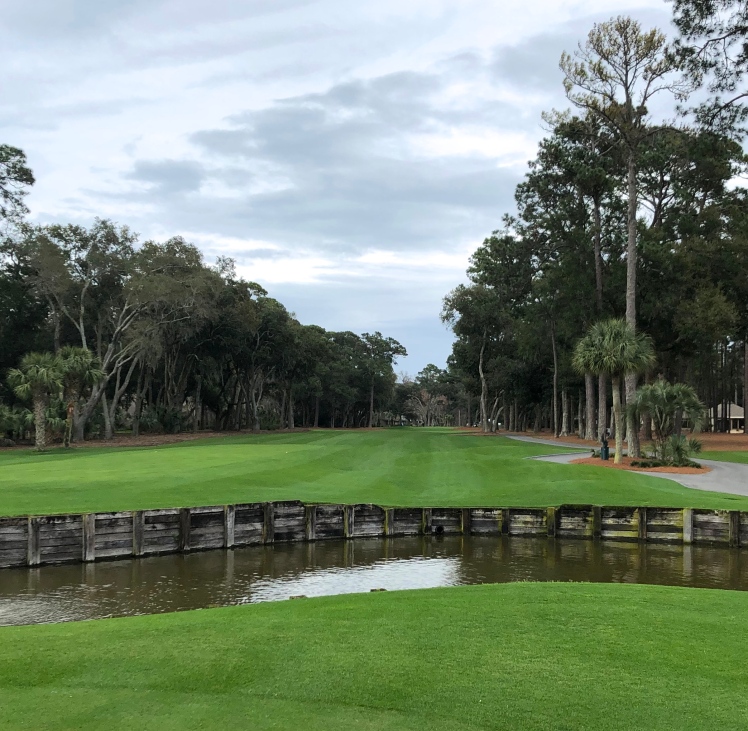
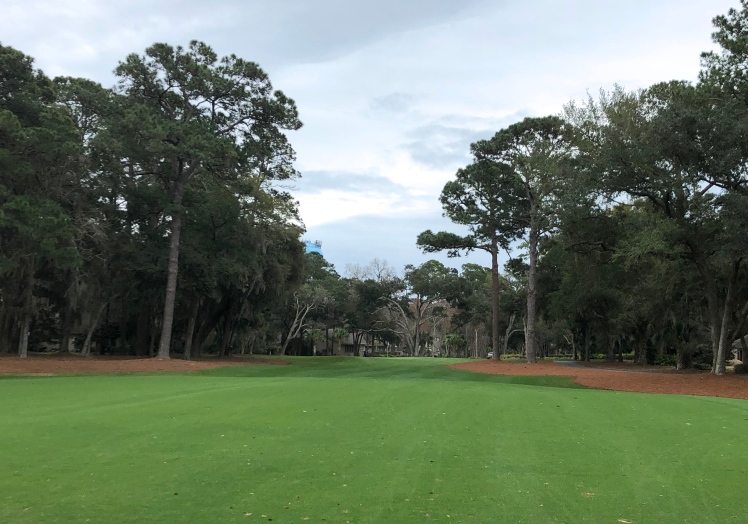
The 2nd hole is the shortest and easiest of Harbour Town’s three par fives at just 471 yards. A fun risk/reward par 5, this dogleg right begins with an easier drive to a wider fairway lined by a large bunker down the left for much of the landing area. This hole narrows and bends slightly to the right at about 275 yards. The defining feature of this hole is a large wastebunker down the right for the final 100 yards with a large tree just short right of the green. This tree obscures part of the green and makes getting home in two a difficult proposition. Further complicating this approach is the fact that the green is narrow and angled diagonally with a bunker short and tiny pot bunker long. The front part of this green slopes steadily back-to-front while the back portion is flatter.
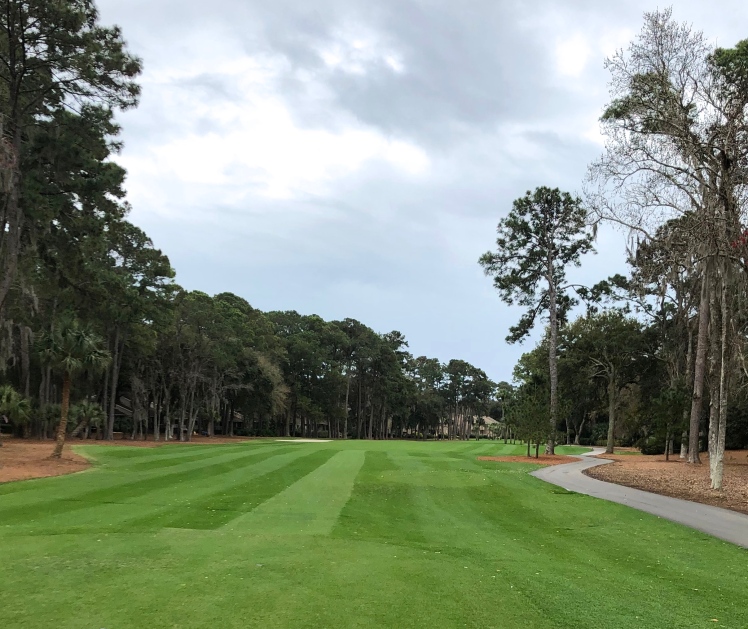
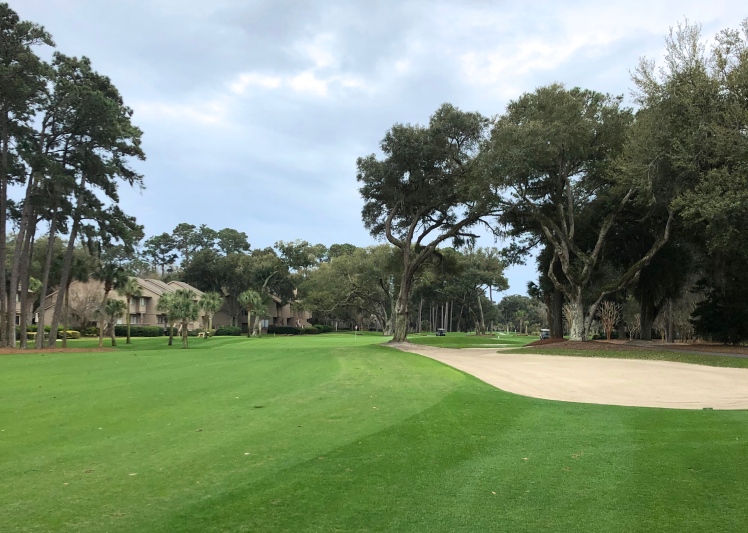
The 3rd hole is a solid but less memorable par 4 at 381 yards. A slight dogleg left, this hole features a tight fairway lined by trees on either side. This green features several distinct compartments and is very well-defended by bunkers short left, right, and short.
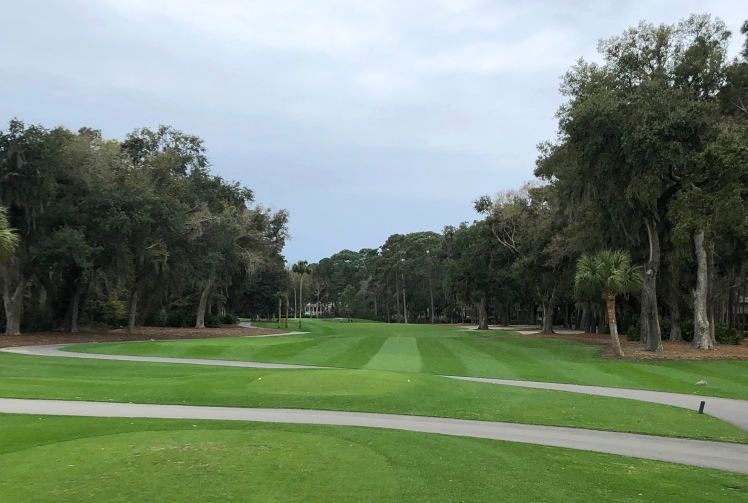
As mentioned above, the par threes here are a memorable group beginning with the 165 yard 4th. Unfortunately, all four play over water and similar distances from the same teebox, somewhat diminishing their collective excellence. This is an intimidating hole playing over water the entire way to a green that juts out over the water with Dye’s patented railroad ties. A well-struck iron is needed to find this putting surface with a large backstop on its rear.
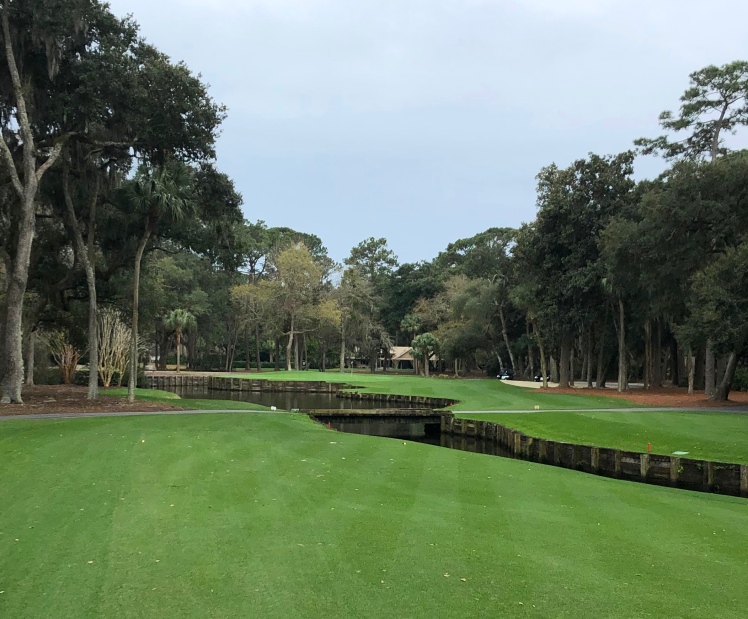
The 5th hole is a big, sweeping 497 yard dogleg left par 5. From the White Tees, this dogleg occurs at only about 225 yards with trees lining the right the entire way and numerous bunkers and a hidden water hazard down the left. This water runs down to almost the green and is certainly in play on this lay-up. The lay-up is further complicated by numerous large waste bunkers for the final 80 yards that line a very narrow fairway. This green is slightly raised and runs back-to-front, lined by a bunker left and tight Bermuda elsewhere.
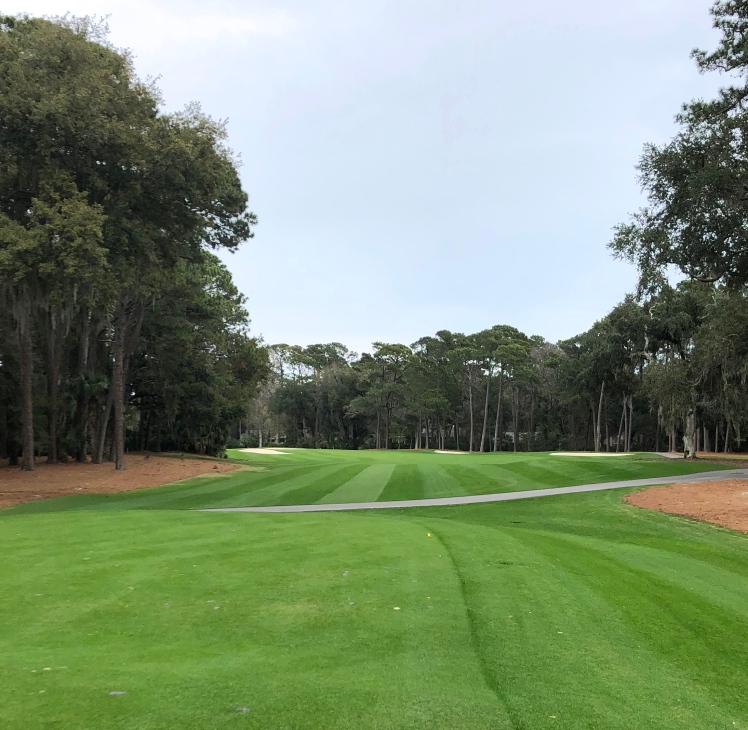
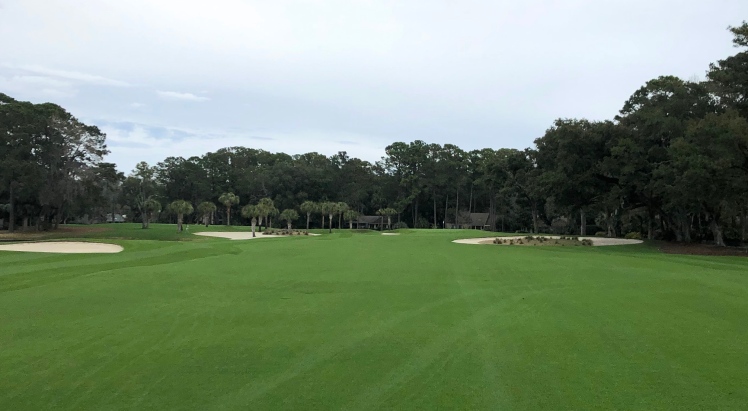
The 6th is another hole that asks you to shape your ball as a 373 yard dogleg right par 4. One of the better holes at Harbour Town, this narrow par 4 turns right around 230 yards, again giving the golfer the option to cut the corner here. A large bunker lines the inside corner of the dogleg and tall trees hug the fairway. This green is well-defended by bunkers on either side and features severe slopes both back-to-front and left-to-right.
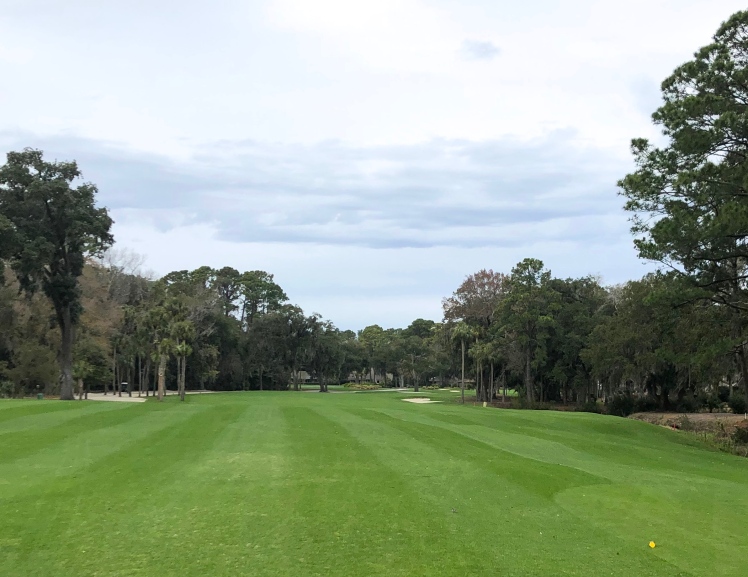
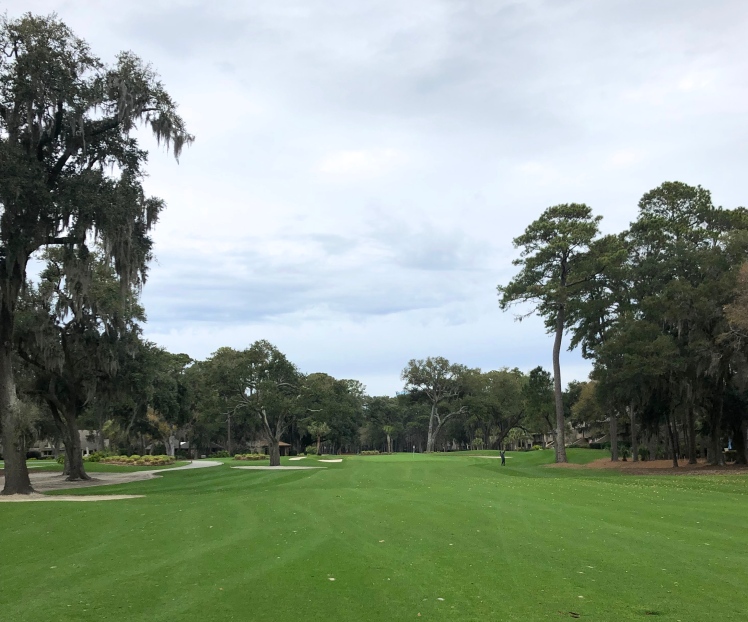
The 7th hole is a very unique par 3 at 160 yards. Again playing over a creek, this hole features somewhat of an island green with a very small putting surface surrounded by a bunker for nearly 360 degrees. This bunker juts in between two trees on the left side and tall trees on either side form somewhat of a “field goal” feeling on this teeshot. The green itself is narrow and features several different plateaus with slopes between them.
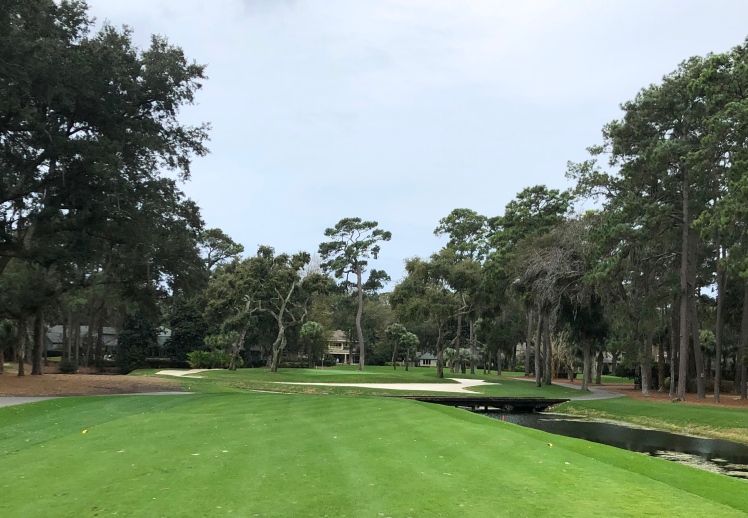
At 405 yards, the 8th hole is one of the longer par fours on the course and probably deserving of its number 1 handicap. A dogleg left, this hole features a wider fairway that turns left at about 240 yards with trees down both sides and a hidden water hazard down the left at about 200 yards. At 260 yards, this slab of fairway ends with a patch of rough and tall trees encroaching on either side. This approach plays to a narrow, back-to-front sloped green lined by a skinny bunker and water down the left. There is lots of danger here and pars are a great score.
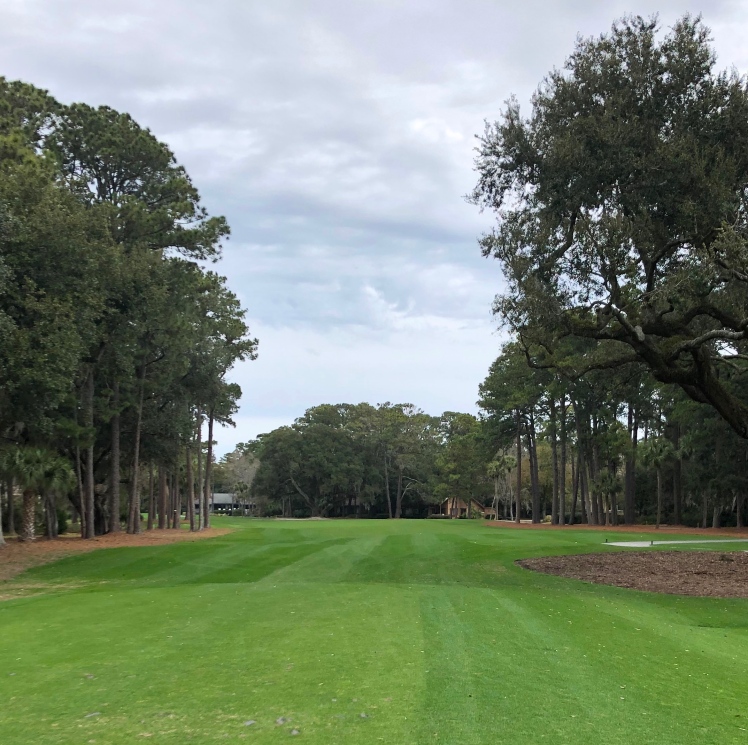
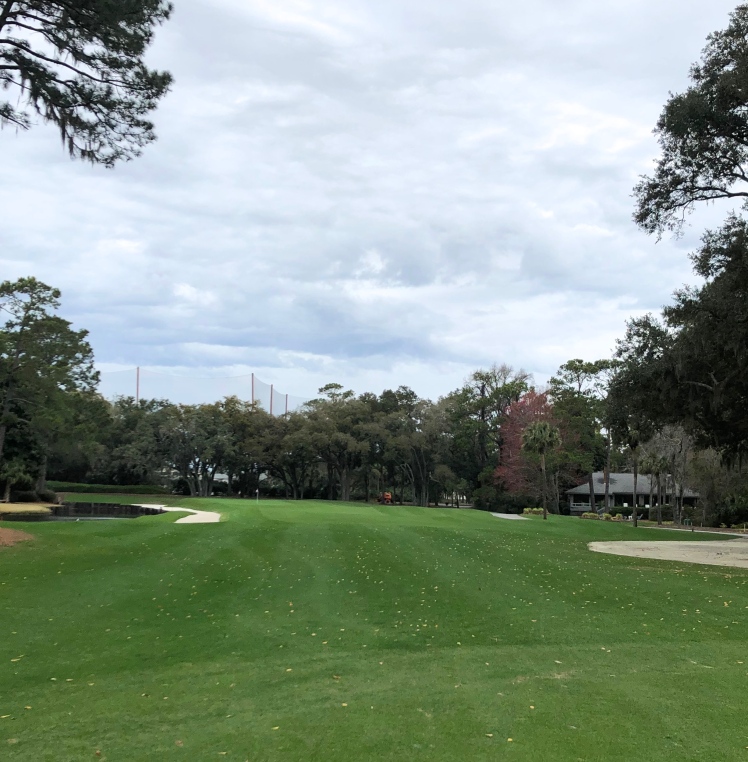
The 9th hole takes you back to the clubhouse as the shortest par 4 on the course at 298 yards. A real standout, this reachable par 4 is dead straight with tall trees down both sides. The defining feature of this hole is an imaginative, heart-shaped green that is a blast to putt on and makes this approach more difficult. A large, deep bunker defends it short, while three smaller pot bunkers can be found wedged between the two sides of the green in the back. Due to the shape of the green, you might have to chip on the putting surface to get close from the other side.
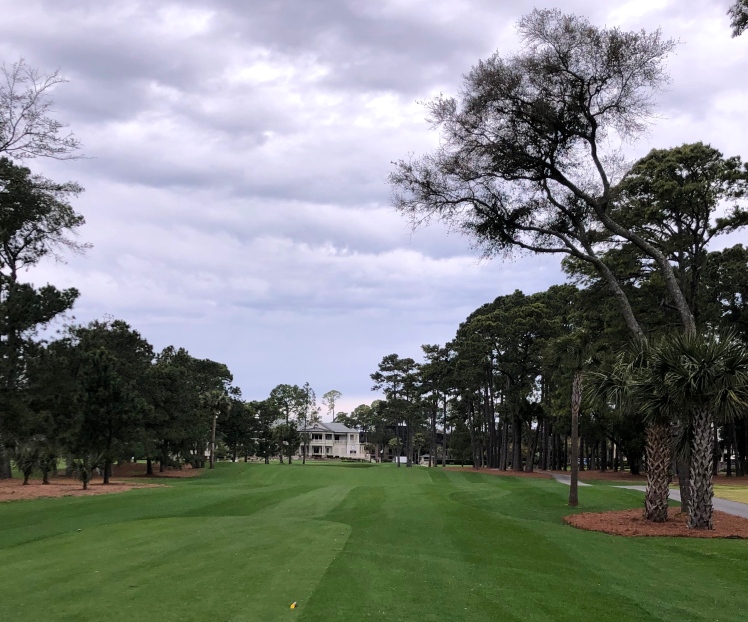
The 10th hole is similar to many of the holes you’ll find at nearby Long Cove (including their 10th) as an intimidating 398 yard dogleg left par 4. There’s plenty of room to miss right, but water lines the left side of the fairway for the first 300 yards. This approach plays through another chute of trees towards a narrow, back-to-front sloped green defended by two bunkers right.
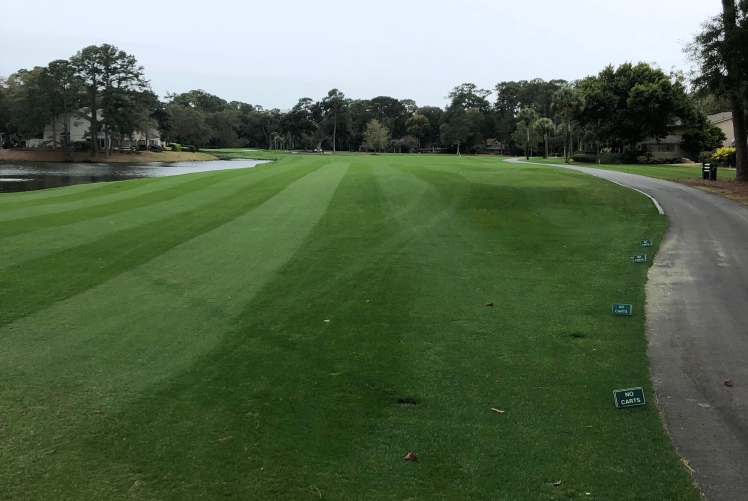
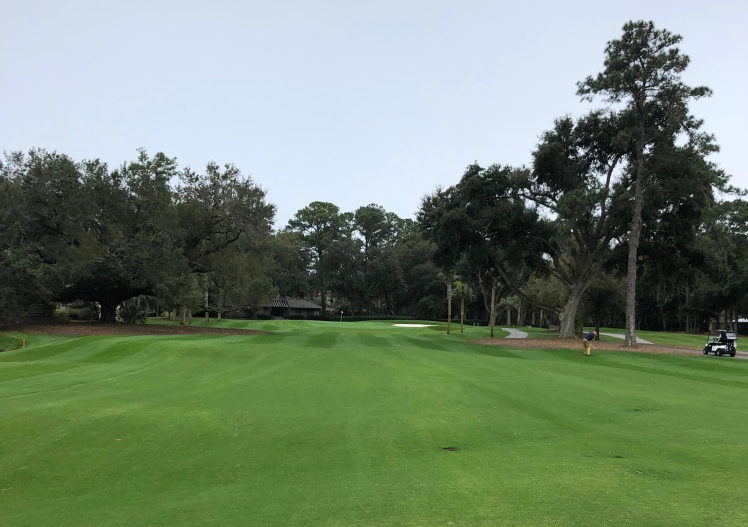
The 11th and 12th holes are two very tight medium-length par fours that are decent holes but don’t stand out compared to the rest of the back 9. At 387 yards, the 11th is the longer of the two and plays as a slight dogleg left with tall trees down either side. This green pinches in on either side and slopes back-to-front with bunkers flanking it.
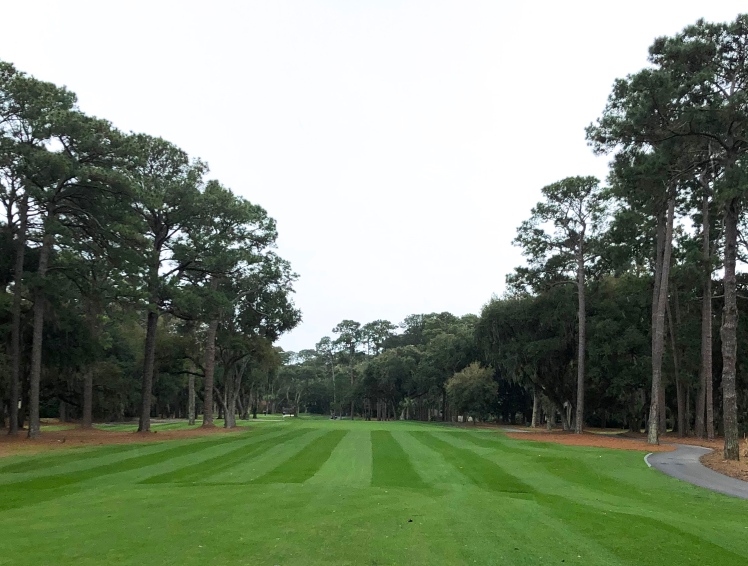
The 12th hole is a 376 yard dogleg right that is again tight and tree-lined. This hole is most notable for its green, which is very long and extremely narrow at just several paces wide. The front portion of the green slopes back-to-front and bunkers defend it on either side.
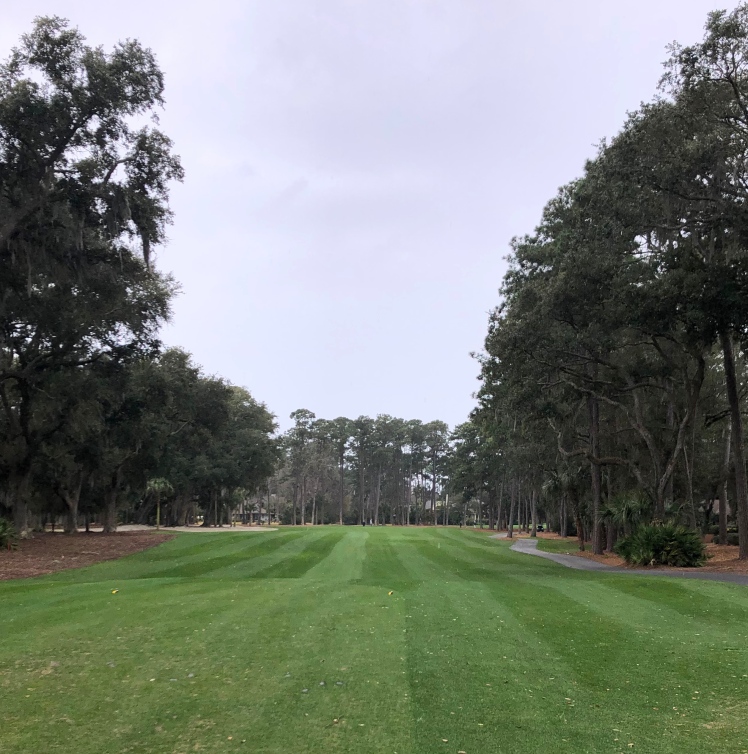
One of the most memorable holes at Harbour Town, the 13th is a 339 yard dogleg left par 4 and the start of a fantastic closing stretch. Also important in golf history as one of the first holes Alice Dye worked on, this hole features a tight, tree-lined fairway that turns left at only about 225 yards. A large bunker sits on the left around 200 yards while another lines the right edge of the dogleg at 245 yards. The defining feature of this hole is a large, boomerang-shaped bunker just short of an elevated green with railroad ties. It is a beautiful approach and a hole you can play several different ways.
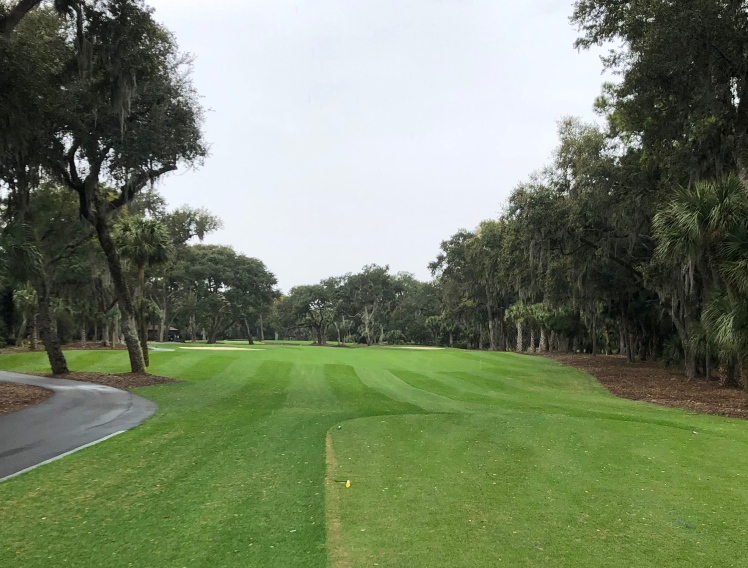
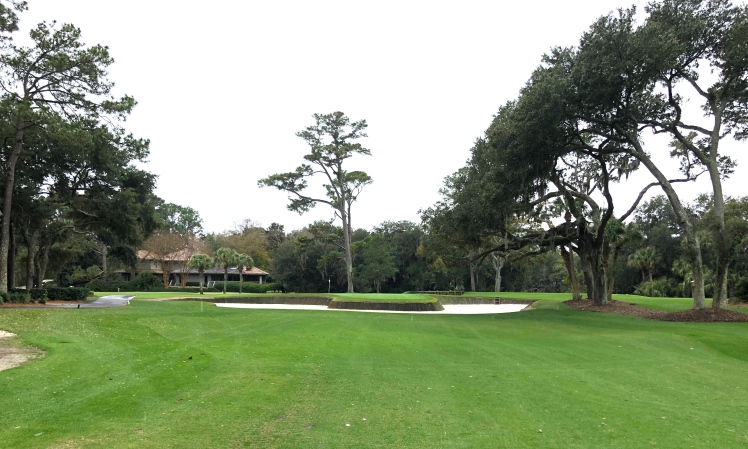
The 14th hole is another medium-length par 3 that plays over water at 148 yards and is probably the most intimidating of Harbour Town’s one-shotters. This hole plays over water the entire way to a very narrow, left-to-right sloped green that juts into the water and is lined by railroad ties. There’s very little room for error here, as short, right, and long will all find the hazard and a pesky pot bunker lies long left.
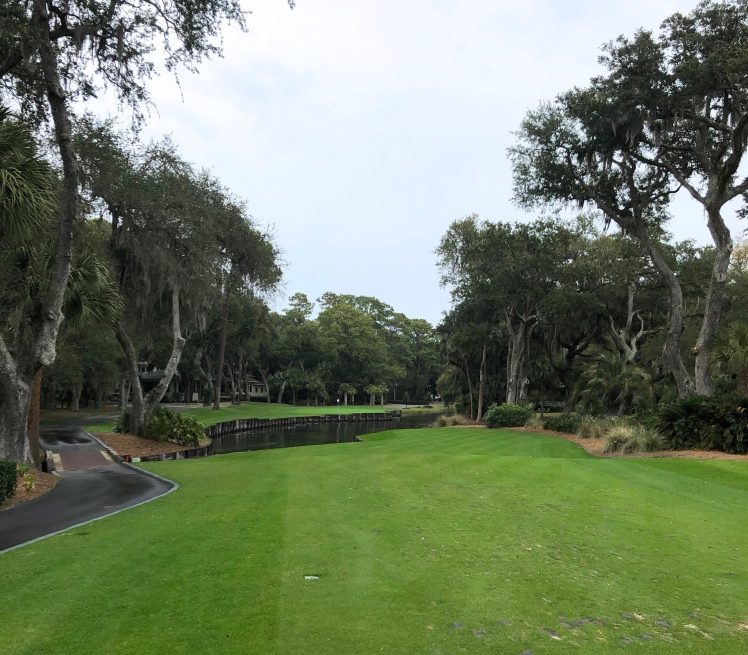
At 541 yards, the 15th hole is Harbour Town’s longest and most difficult par 5. This hole plays tight and tree-lined with a large bunker down the right for much of the landing area. Golfers will have to make some decisions on their second shot, as the fairway starts to bend left around water 125 yards short of the green. A large tree about 50 yards from the green sits in the left rough and obscures part of the green. Pete Dye has a habit of placing trees in front of the green on some of his holes, and I am generally not a fan of it. On this hole, it has the effect of forcing the golfer to find the right side of the fairway for their approach. This green is lined by skinny bunkers short on either side and features two tiers, with everything funneling towards the back left.
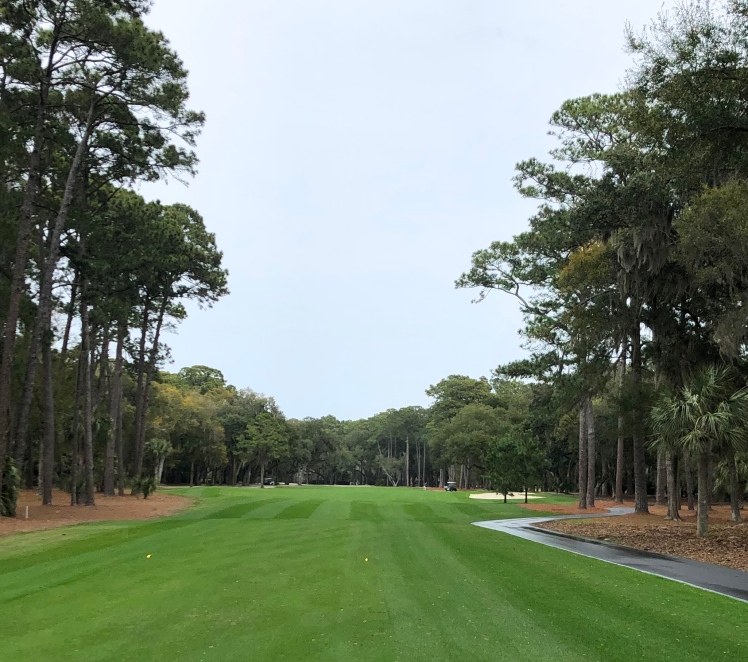
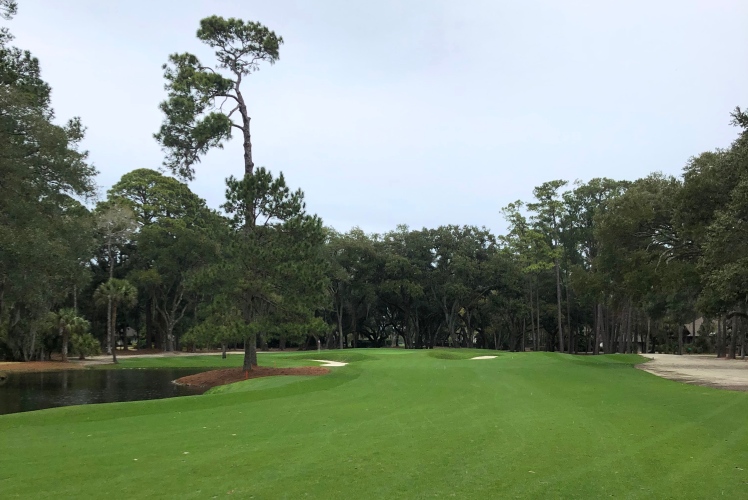
The 16th hole is a 361 yard par 4 that turns 90 degrees left at about 260 yards. The right side of this hole is very open but OB and a large wastebunker hug the inside corner of the dogleg. You can see famed Calibogue Sound in the background on this approach towards an elevated right-to-left sloped green lined by a bunker right.
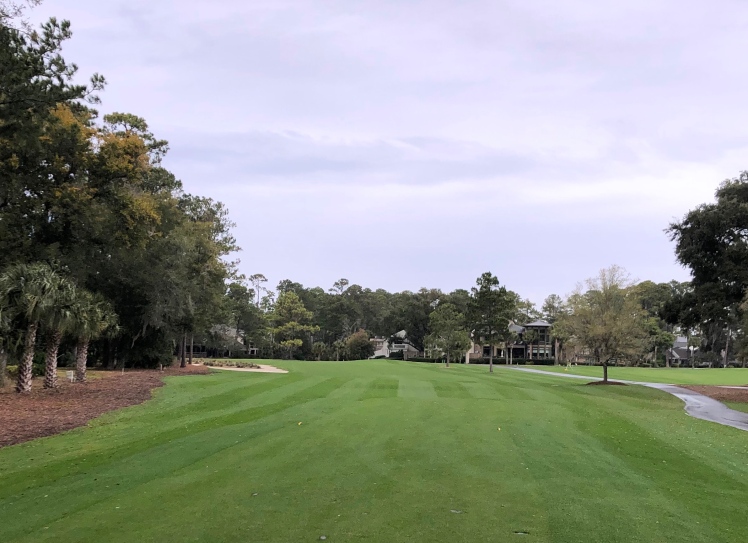
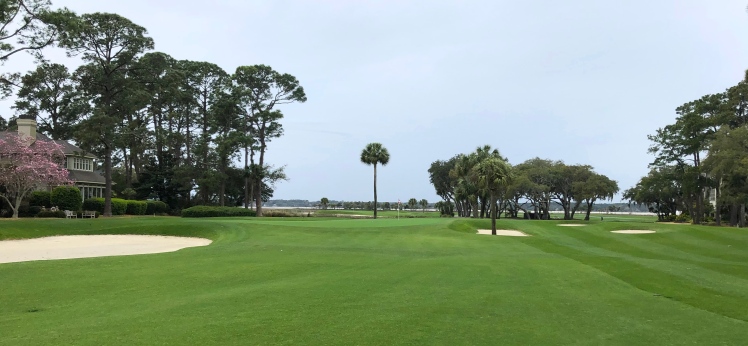
By the time you reach the 17th tee, you are on the water and dealing with windy conditions that weren’t present for much of the round. This is a gorgeous 159 yard par 3 playing over water to a narrow, back-to-front sloped green lined by bunkers on either side.
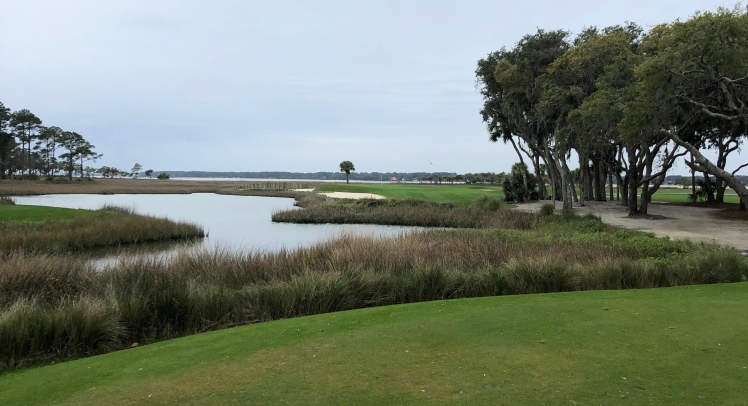
Harbour Town’s closer is one of golf’s most famous holes as a strong 414 yard par 4. This hole feels quite different from the rest of the course with the Sound down your left and a decent 180 yard forced carry over marsh to the widest fairway on the course. This wide fairway is only temporary, however, as your approach will have to carry additional marsh that juts in from the left. This green is fairly flat but is quite small and lined by bunkers short and long and water left. It is an epic finishing hole for both the RBC Heritage and amateurs alike.
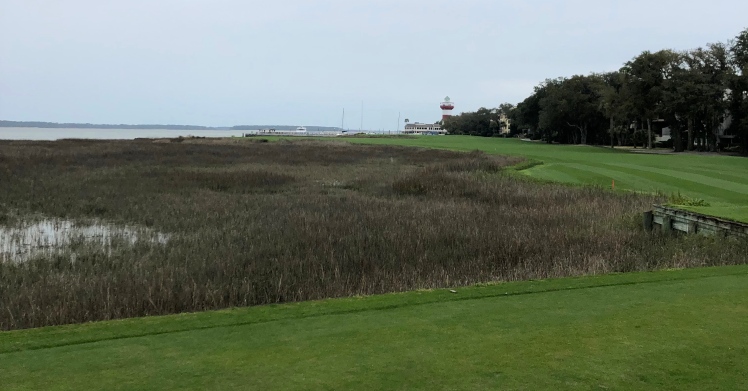
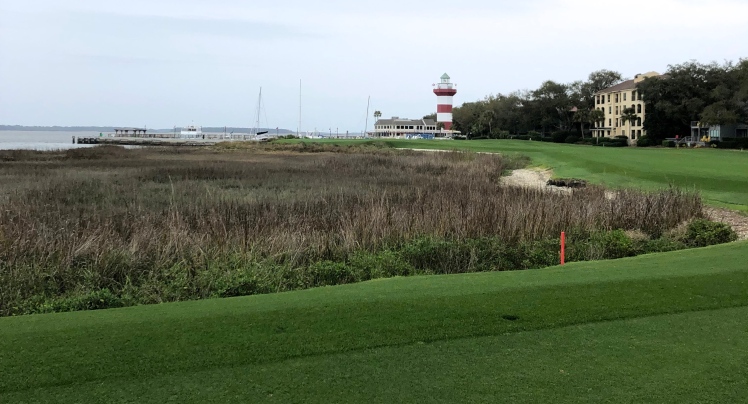
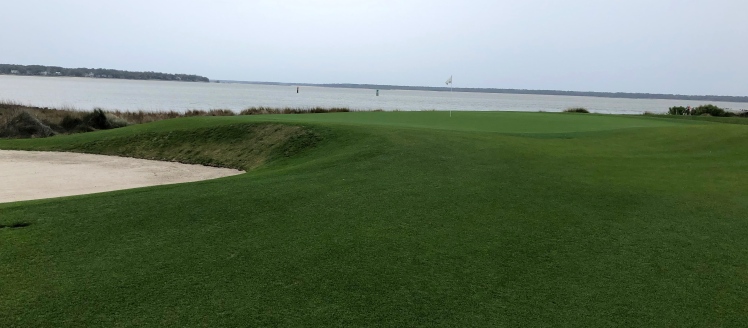
General Comments: Harbour Town features an impressive clubhouse with a fully stocked Pro Shop, elegant locker room, and awesome museum dedicated to the Pete Dye. All groups must have at least a forecaddie, but walking with a caddie is an option. The driving range at Harbour Town is adequate but fairly small for a PGA Tour course.
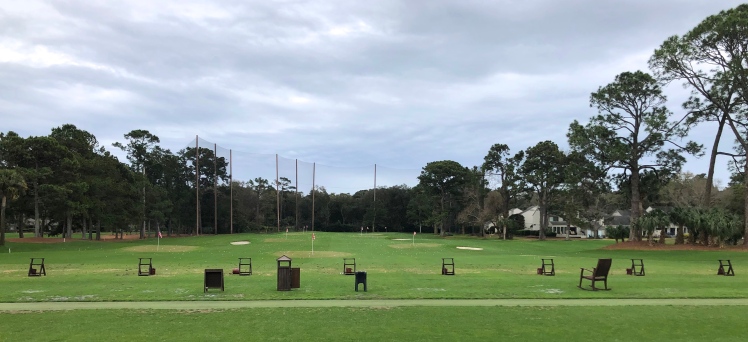
Verdict: Although not as revered as when it first opened in 1969, the ever iconic Harbour Town is still easily one of the best public courses in America and best stops on the PGA Tour. Also one of the most significant architectural designs of the 20th century, Harbour Town ushered in a whole new era of golf course design and made Pete Dye a household name. Famous for its small greens, emphasis on ball-shaping, and majestic closing stretch along the Calibogue Sound, this is a must-play for serious golfers.
2 thoughts on “Review: Harbour Town Golf Links”